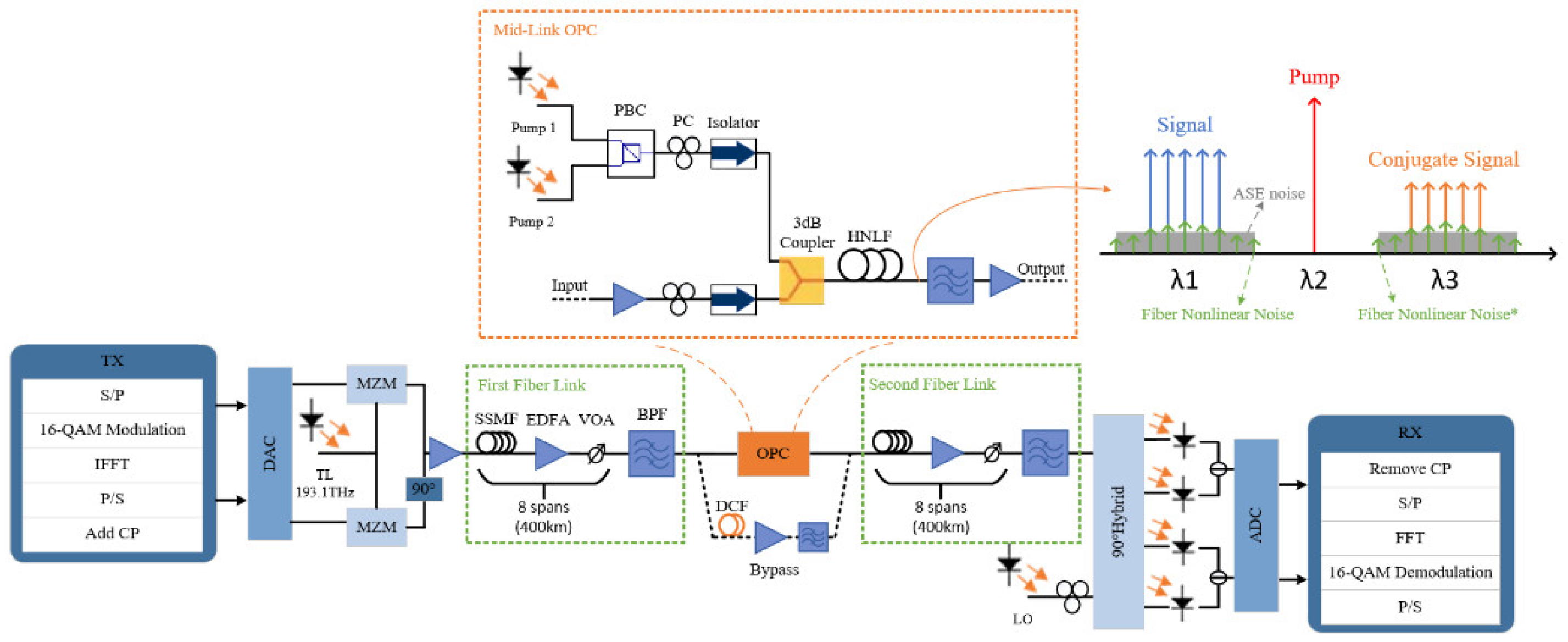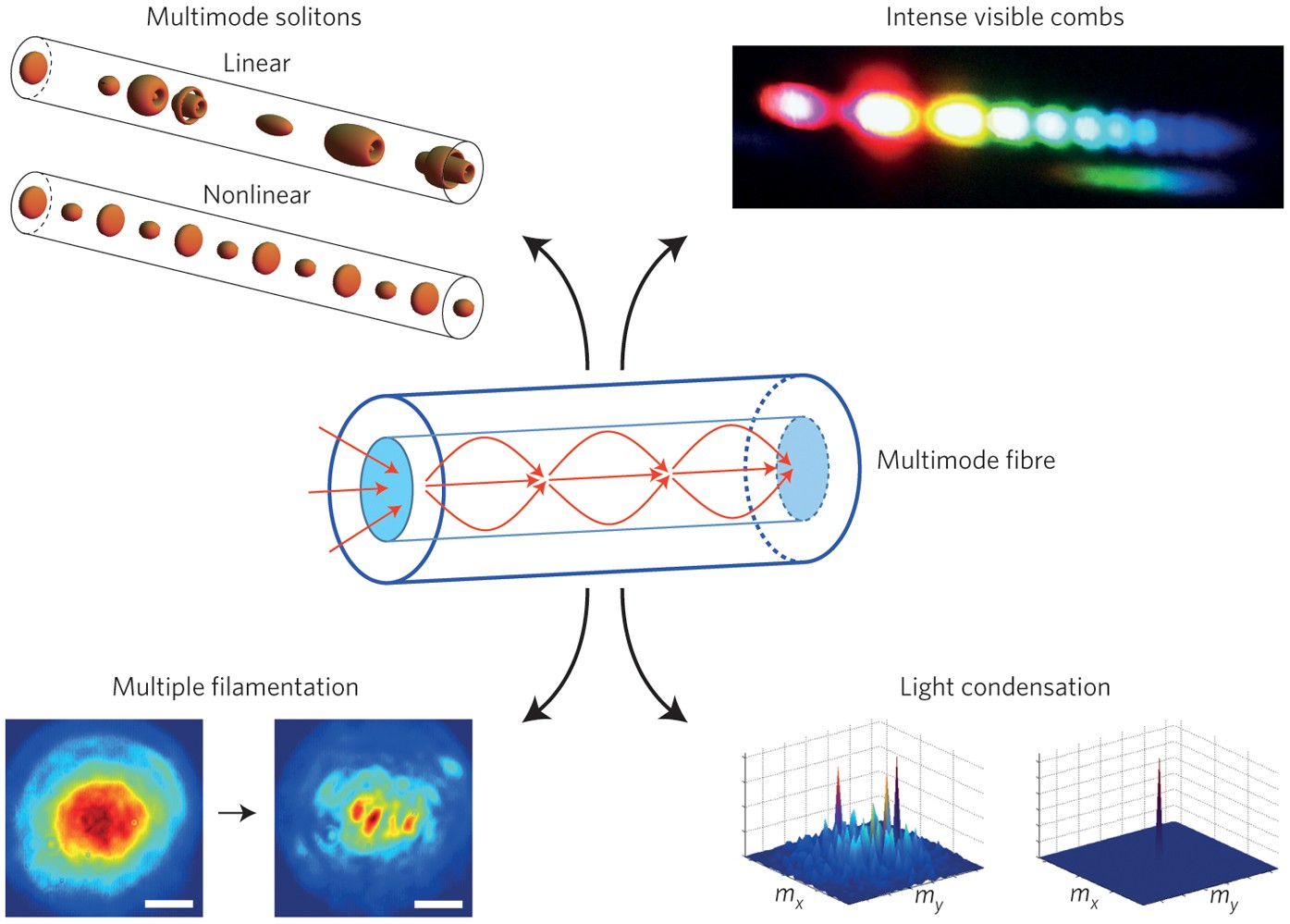Contents

Source: MDPI
Understanding Highly Nonlinear Optical Fibers
Highly nonlinear fibers are specialized optical fibers designed to exhibit strong optical nonlinearities. These fibers are crucial in various advanced applications such as nonlinear pulse compression, supercontinuum generation, parametric fiber devices, Raman lasers, fiber-optic sensors, and telecom signal processing.
Characteristics of Highly Nonlinear Fibers
Unlike standard telecom single-mode fibers, highly nonlinear fibers have nonlinearities that are often an order of magnitude stronger. This enhanced nonlinearity is essential for specific applications where strong nonlinear effects are required.
Nonlinear Optical Effects
In optical fibers, several nonlinear effects can occur:
- Self-phase modulation (SPM) and cross-phase modulation (XPM) are quantified by a parameter measured in radians per watt per kilometer. This parameter is also useful for calculating parametric gain.
- Raman gain and Brillouin gain are often described in decibels per watt per meter, depending on the optical frequency difference between pump and signal.
It is important to note that the nonlinear index alone does not determine the strength of nonlinear effects; the mode area also plays a crucial role.
Methods to Achieve High Fiber Nonlinearity
Choice of Glass Material
Optical fibers can be made from glass materials with high nonlinearity, such as glasses containing heavier elements with low glass transition temperatures and small bandgap energies. These materials, often referred to as “soft glasses,” are used in mid-infrared fibers. For example, chalcogenide fibers exhibit much stronger nonlinearity compared to common silica fibers.
Small Mode Areas
The most common method to achieve strong fiber nonlinearities is by designing fibers with a small effective mode area. These fibers typically have a high numerical aperture and high refractive index contrast, leading to increased strength of nonlinear effects per meter of fiber.
Although these fibers may have higher propagation losses, the required fiber length is shorter, which is beneficial for compact device applications. However, splicing these fibers to standard fibers can be challenging due to mode area mismatches.
Applications of Highly Nonlinear Fibers
Spectral Broadening for Nonlinear Pulse Compression
In pulse compression, spectral broadening is achieved through self-phase modulation, sometimes with additional contributions from four-wave mixing and Raman scattering. Highly nonlinear fibers allow for shorter fiber lengths, which is advantageous for compact device design.
Supercontinuum Generation
Supercontinuum generation involves dramatic spectral broadening using ultrashort pulses. Highly nonlinear fibers are preferred due to their strong nonlinear effects. The chromatic dispersion properties are also crucial for efficient supercontinuum generation.
Parametric Fiber-optic Devices
In optical parametric oscillators and amplifiers, fiber nonlinearity is exploited. Phase matching of nonlinear interactions is essential, and highly nonlinear fibers allow for shorter fiber lengths, which reduces sensitivity to temperature variations.
Raman Lasers and Amplifiers
Raman amplifiers, used for amplifying telecom signals, benefit from the use of highly nonlinear fibers to reduce the required fiber length. These fibers are also useful in Raman lasers for generating radiation suitable for high-power pumping of erbium-doped fiber amplifiers.
Signal Processing
Fiber nonlinearities facilitate various optical telecom signal processing methods, including wavelength channel translation, optical signal regeneration, and optical switching.
This blog post provides a comprehensive overview of highly nonlinear fibers, their characteristics, methods to achieve high nonlinearity, and their applications. Using a professional and academic tone, it details the importance and uses of these fibers in modern optical technologies.

Source: Nature
Feel free to comment your thoughts.



